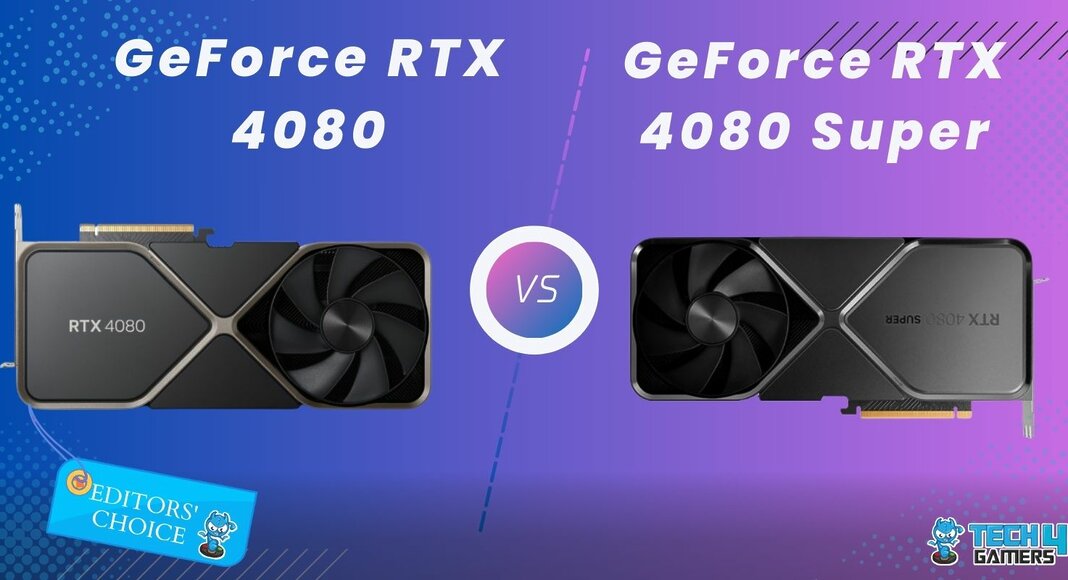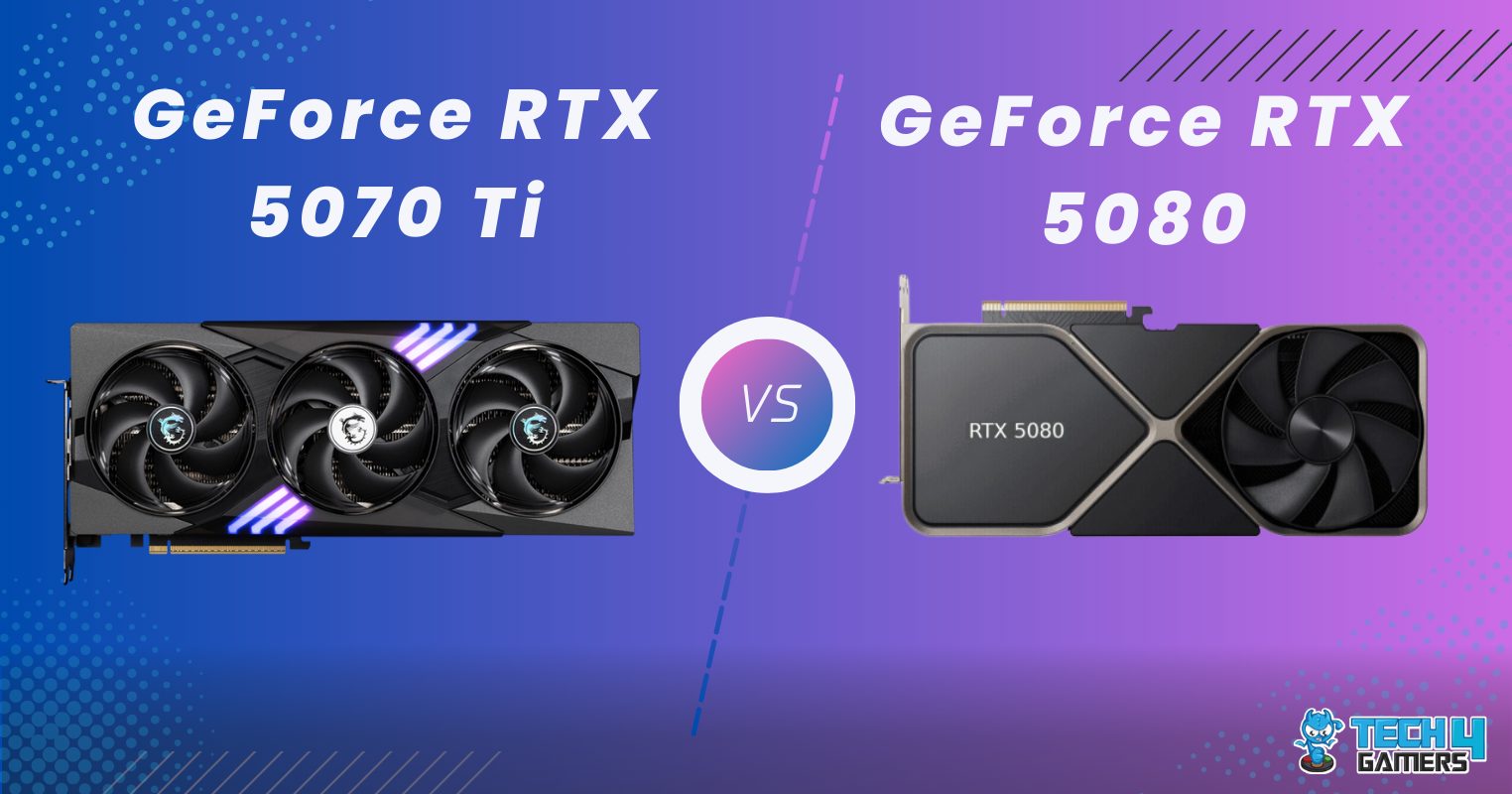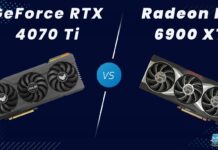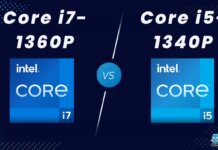Nvidia GeForce RTX 4080 Super
Rated: 7/10
Nvidia GeForce RTX 4080
Rated: 8/10
Pros And Cons
| Graphics Card | Pros | Cons |
|---|---|---|
| RTX 4080 Super | ✅ Better gaming performance ✅Lower price | ❌Bad power efficiency |
| RTX 4080 | ✅ Better power efficiency ✅Excellent ray tracing performance | ❌High price |
- The performance difference in our testing at 4K with the Ultra settings showed the RTX 4080 Super to be around 2.8% faster than the RTX 4080 on average, meaning that the difference between these two cards is very unnoticeable.
- The power consumption of the RTX 4080 Super was close to 1% higher than the RTX 4080, once again leading to an insignificant difference between the two cards.
- The release of the RTX 4080 Super has brought the price of this tier down to $999 while reducing the MSRP of the vanilla 4080 to around $949.
- The only good thing that came out of the release of the RTX 4080 Super was the accompanying price cut, which is disappointing as we were expecting some improvements in performance over its vanilla counterpart.
Comparison Table
| Feature | GeForce RTX 4080 Super | GeForce RTX 4080 |
|---|---|---|
| Architecture | Ada Lovelace | Ada Lovelace |
| Design Chip | AD103-400-A1 | AD103-300-A1 |
| Product Family | Nvidia GeForce RTX 40 series | Nvidia GeForce RTX 40 series |
| Steam Processors/Cuda Cores | 10240 | 9728 |
| Compute Units/Tensor Cores | 320 | 304 |
| Ray Accelerators | 80 | 76 |
| ROPs | 112 | 112 |
| Memory Bandwidth | 736.3 GB/s | 716.8 GB/s |
| Best Variants | Best RTX 4080 Super Graphics Cards | Best RTX 4080 Graphics Cards |
Architectural Differences
- Clock Speeds: The RTX 4080 Super brings a modest bump in clock speeds over the RTX 4080. It has a base clock of 2295MHz instead of the 2205MHz of the RTX 4080 and a boost clock of 2550MHz instead of the 2505MHz.
- VRAM: Nvidia made no improvements to the VRAM with this upgrade, with both cards supporting a 16GB memory buffer with GDDR6X RAM carried over a 256-bit bus.
- Process Node: The processing cores were rolled back with the RTX 4080 Super, perhaps to bring higher yields so the card could be sold more cheaply. It uses 5nm processing nodes instead of the 4nm ones on the RTX 4080 Super.
- TDP: Both cards have the same TDP of 320 watts, which speaks favourably for their power efficiency.
The RTX 4080 has given users a great gaming experience on high resolutions for a while now, though it has come at a hefty cost. Nvidia has tried to rectify this with the release of the RTX 4080 Super, but does it bring a recommendable value proposition to the average consumer? Keep scrolling to find out!
Gaming Benchmarks
To test the performance of these two titans, we have created a special test bench designed to leave only the graphics cards as the potential bottleneck. Take a look at the specifications of this build below:
Test Bench
- CPU: Core i9 13900K
- Motherboard: ASUS TUF Gaming Z690-Plus
- RAM: G.Skill Ripjaws S5 6000MHz DDR5
- SSD – XPG GAMMIX S70 BLADE 2TB NVMe
- PSU – ENERMAX REVOLUTION D.F. X 1050W
- GPU: MSI RTX 4090 Suprim X
- CPU Cooler: Arctic Liquid Freezer II 360 – AIO Water Cooler
Cyberpunk 2077 Phantom Liberty

- In a demanding game with Ultra settings, path tracing, and DLSS 3 enabled, the RTX 4080 Super exhibited a marginal 3% advantage, achieving a slightly faster average framerate of 61 FPS compared to the RTX 4080’s 59 FPS.
- The 1% lows on these cards were also very close, with the RTX 4080 Super at 45 FPS and the RTX 4080 trailing by just one frame, hitting a minimum of 44 FPS.
Avatar Frontiers Of Pandora

- In Avatar Frontiers Of Pandora, with Ultra settings and DLSS set to quality, the RTX 4080 Super maintained a frame rate of 77 FPS, edging out the RTX 4080 by a slight 2.6% difference, which had a frame rate of 75 FPS.
- The 1% lows were also only a frame apart, with the RTX 4080 Super having a framerate of 53 FPS, while the vanilla RTX 4080 had a framerate of 52 FPS. Both the games tested so far have brought forth an indistinguishable difference.
Remnant 2

- With the Ultra settings enabled and no DLSS, there was absolutely no difference between the performance of these cards, with both of them achieving a framerate of 50 FPS.
- The 1% lows were again only a frame apart, with the RTX 4080 being in the lead this time. It had a framerate of 44 FPS, while the RTX 4080 Super had 1% lows of 43 FPS.
Alan Wake 2

- In this setup with Ultra settings, RT path tracing, and DLSS 3 frame generation enabled, both the RTX 4080 Super hit an average frame rate of 54 FPS, closely followed by the RTX 4080 with 53 FPS.
- The RTX 4080 had 1% lows of 45 FPS, while the RTX 4080 did not budge from its record of being one frame behind with lows of 44 FPS.
The Last Of Us Part 1

- In The Last Of Us Part 1, at ultra settings, the RTX 4080 Super achieved an average frame rate of 74 FPS, outperforming the RTX 4080 by approximately 4.2% at 71 FPS.
- The 1% lows also differed a bit between the two cards, with the RTX 4080 Super shooting down to 63 FPS in hard-to-render scenes, while the RTX 4080 has lows of 59 FPS, leading to a difference of around 7%.
Red Dead Redemption 2

- Both cards returned to giving an unchanging performance, with the RTX 4080 Super getting a framerate of 106 FPS, while the RTX 4080 was a tad bit behind with a performance of 104 FPS, accumulating a difference of around 2%.
- The 1% lows were actually higher on the RTX 4080 once again at 84 FPS instead of the 83 FPS of the RTX 4080 Super.
Forza Horizon 5

- There was little to no difference in this game as well, with both cards running under the Extreme settings. The RTX 4080 Super had a framerate of 146 FPS, while the RTX 4080 was 2% slower with an average framerate of 143 FPS.
- The RTX 4080 Super had 1% lows of 122 FPS, while the RTX 4080 was indistinguishably different, with a performance of 121 FPS.
Microsoft Flight Simulator 2020

- In this game at Ultra settings, the RTX 4080 Super and RTX 4080 performed similarly, with the former having an average frame rate of 76 FPS and the latter slightly behind at 75 FPS.
- The case was flipped in the 1% lows. The RTX 4080 had 1% lows at 63 FPS, while the RTX 4080 Super had a framerate of 62 FPS for graphically intensive scenes.
Starfield

- Our assumptions stayed true in Starfield, too, with the Ultra settings enabled. The RTX 4080 Super had an average framerate of 59 FPS, while the RTX 4080 was behind by 3.5%, with an average framerate of 57 FPS.
- The performance in 1% lows was also consistent, with the RTX 4080 Super getting a minimum framerate of 49 FPS, while the RTX 4080 had a framerate of 48 FPS.
Hogwarts Legacy

- With RT enabled, both cards had a pretty mediocre performance in this game, with the RTX 4080 getting an average framerate of 41 FPS while the RTX 4080 had an average framerate closer to 40 FPS.
- The 1% lows were identical on both graphics cards, with both cards getting lows of 30 FPS.
The Witcher 3: Next-Gen

- In The Witcher 3 remaster with RT on and DLSS set to quality, both cards performed similarly, with the RTX 4080 Super averaging 59 FPS and the RTX 4080 slightly behind at 58 FPS.
- The 1% lows flipped for once last time, with the RTX 4080 getting lows of 46 FPS, while the RTX 4080 Super had 1% lows of 45 FPS.
The performance of the RTX 4080 Super was higher in the FP32 benchmark, which is a synthetic test. It performed around 7% better than the RTX 4080, which, unfortunately, does not translate to real-world gaming performance.
– Ali
Overall Gaming Performance
| Featured | RTX 4080 Super | RTX 4080 |
|---|---|---|
| Average FPS | 73 📈 | 71 📈 |
| %1 lows | 58 📉 | 57 📉 |
| Winner: Nvidia's RTX 4080 Super | ||
The RTX 4080 Super shows a marginal 2.8% improvement in average framerate over its predecessor, though this difference is nearly invisible in real-world performance. Similarly, the 1% lows reveal a mere 1% advantage for the RTX 4080 Super, with some games favoring the RTX 4080.
Take a look at our recorded gameplay while we were benchmarking these GPUs:
Power Consumption
| Game | RTX 4080 (W) | RTX 4080 Super (W) |
|---|---|---|
| Cyberpunk 2077 | 293 | 305 |
| Avatar Frontiers Of Pandora | 308 | 312 |
| Remnant 2 | 298 | 303 |
| Alan Wake 2 | 302 | 303 |
| The Last Of Us | 257 | 262 |
| Red Dead Redemption 2 | 283 | 278 |
| Forza Horizon 5 | 254 | 252 |
| Microsoft Flight Simulator | 299 | 303 |
| Starfield | 275 | 274 |
| Hogwarts Legacy | 264 | 276 |
| Average Power Consumption | 283.3 | 286.8 |
| Winner: Nvidia's RTX 4080 | ||
There was only a 1% difference between the power consumption of these two cards, with the RTX 4080 Super being slightly more power-hungry. This difference is so small that it would shift depending on the cooler your card has and even the amount of RGB. All in all, the power difference between these cards is insignificant.
Price And Value
| Graphics Card | Launch MSRP | Current Price |
|---|---|---|
| RTX 4080 | 💲1199 | 💲949 |
| RTX 4080 Super | 💲999 | 💲999 |
| Difference | 20.02% | 5% |
The best change that the RTX 4080 Super has brought is a price reduction. It cuts the cost for Nvidia’s current xx80 card from $1199 to $999, and it cuts the cost of the RTX 4080 by a further $50. This marks a very significant 20% reduction in price from the original card, and it is a breath of fresh air as GPU prices have gone nowhere but up in the past few years.
Our Verdict
RTX 4080 Super: This card doesn’t offer significant improvements over its predecessor, aside from a lower price. The performance difference is minimal, power efficiency remains unchanged, and there are no new features. Nevertheless, the RTX 4080 Super stands as the most powerful GPU in this midcycle refresh.
RTX 4080: The RTX 4080 delivers top-tier performance, previously hindered by its high price. If deciding between the two cards, opt for the RTX 4080, if available at a discounted price, as it offers virtually identical performance to its super variant.
Comparing the RTX 4080 Super vs RTX 4080 is an apples-to-apples comparison in the truest sense, as there is no discernable difference between the two cards, at least in terms of real-world performance.
Frequently Asked Questions
Yes, the RTX 4080 Super brings 5% more Cuda cores with accompanying increments to the RT and tensor cores as well.
Yes, the difference between the memory bandwidth of the two GPUs is about 5%, which most games will not benefit greatly from.
The RTX 4080 Super and the RTX 4080 both use the AD103 GPU die, though the variant used with the RTX 4080 Super is a less cut-down version of the chip.
More From RTX 4080
Thank you! Please share your positive feedback. 🔋
How could we improve this post? Please Help us. 😔
[Hardware Reviewer]
Hi! I’m Ali Tauseef, and I have been writing for Tech4Gamers since 2022. I love all things computer hardware but am particularly fond of CPUs and motherboards, and I like to stay up-to-date about the latest advancements in these worlds, and when possible, write about it. When I’m not doing that, I like to get into a little FPS action in CS2 or get lost in the vast world of RDR2.
Get In Touch: ali@tech4gamers.com





![Ryzen 9 9900X Vs Ryzen 9 7900X [We Tested Both In 2025] AMD Ryzen 9000s Series Processors](https://tech4gamers.com/wp-content/uploads/2024/08/Ryzen-9-9900X-Vs-Ryzen-9-7900X-1-218x150.jpg)

